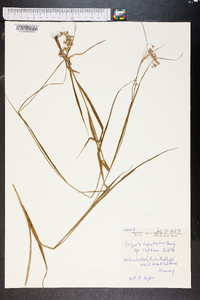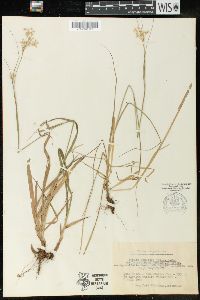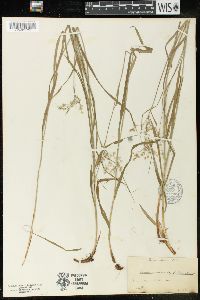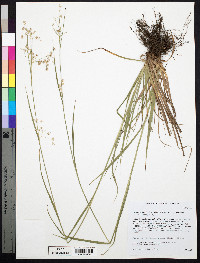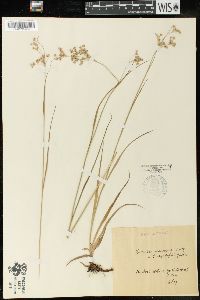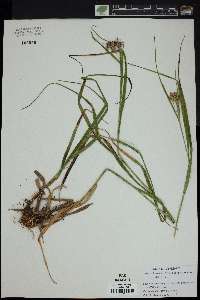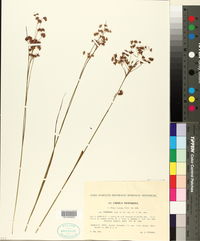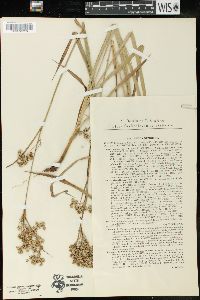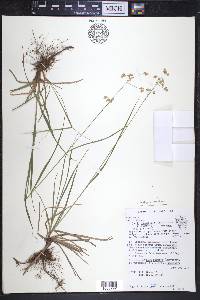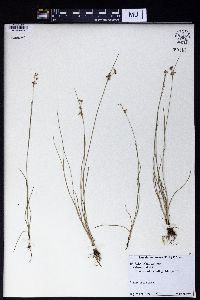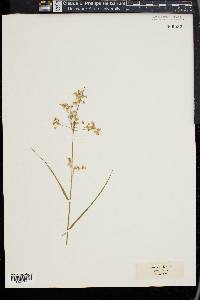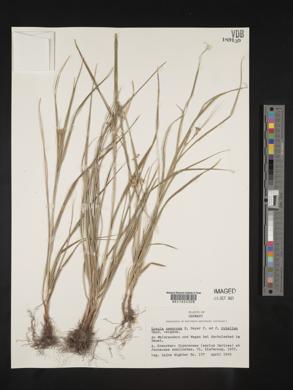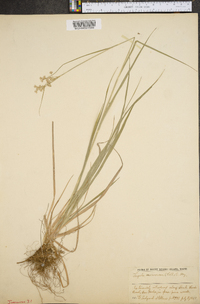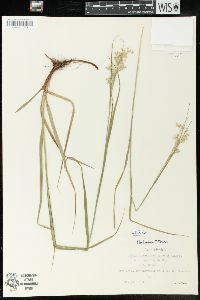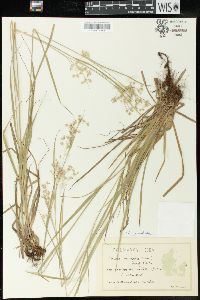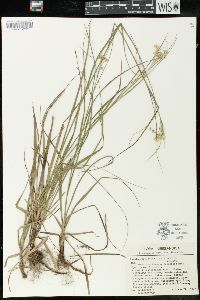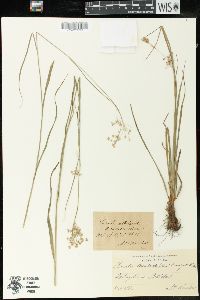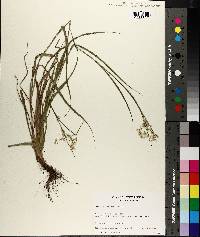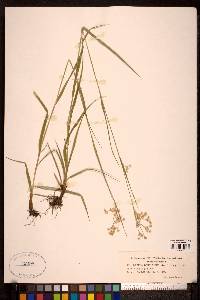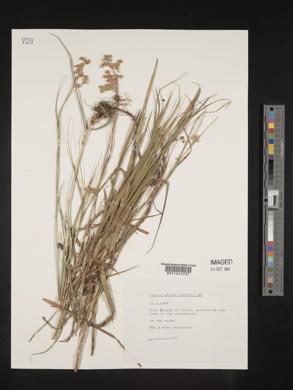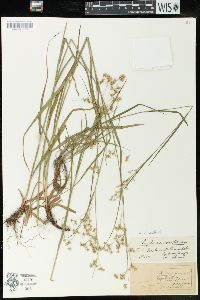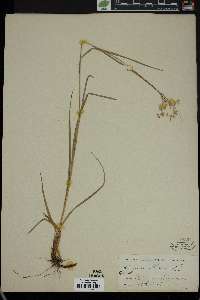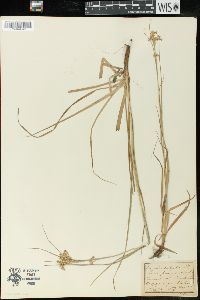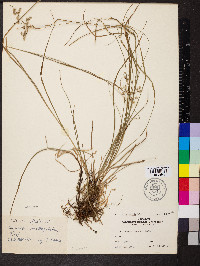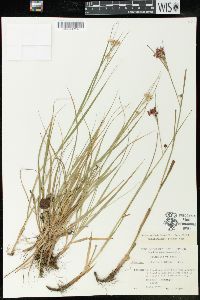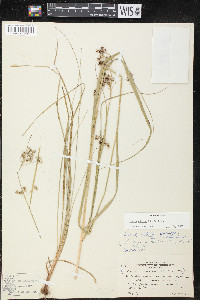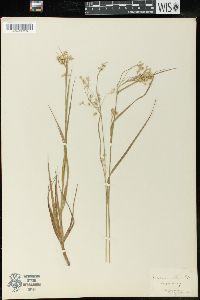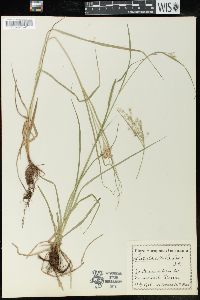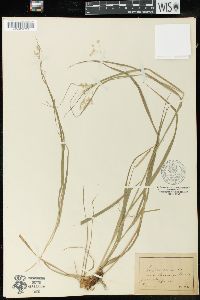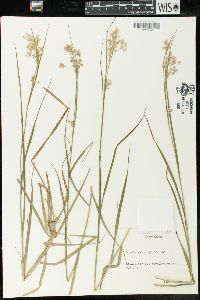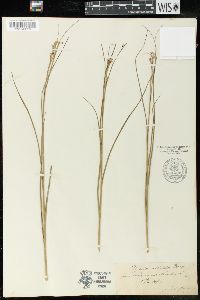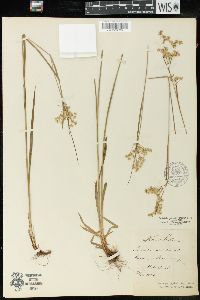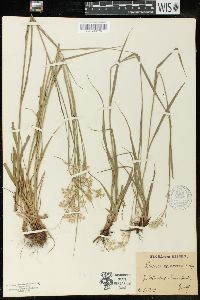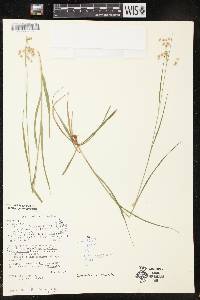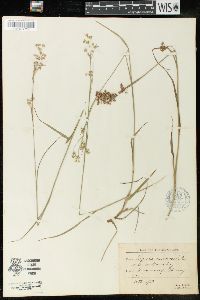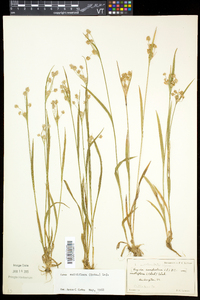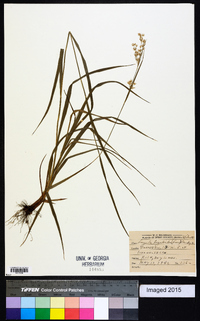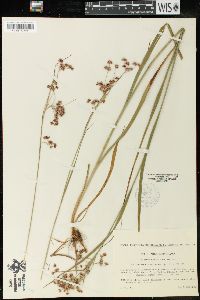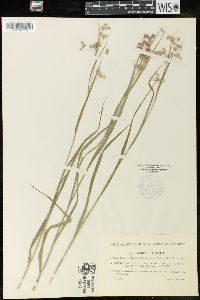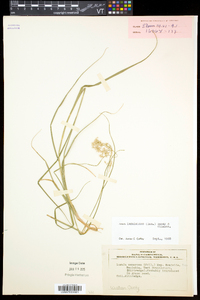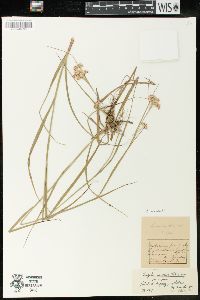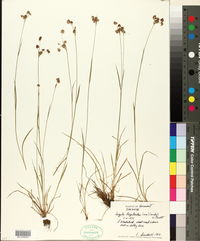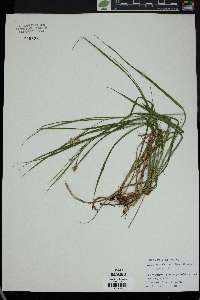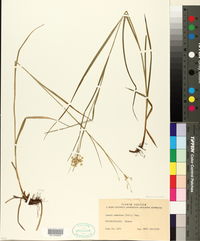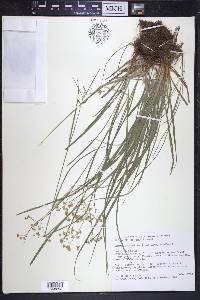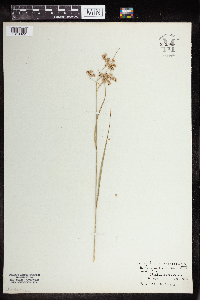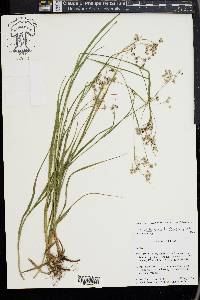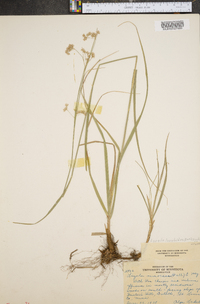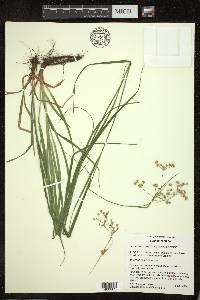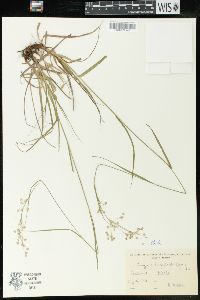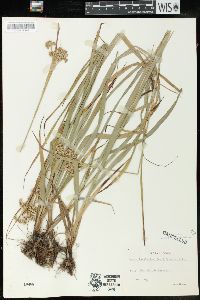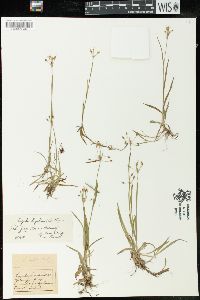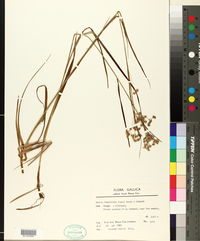Luzula luzuloides
|
|
|
|
Family: Juncaceae
Oak-Forest Wood-Rush
[Luzula albida, moreLuzula nemorosa] |
Perennial grasslike forb 45 - 70 cm tall Leaves: basal and alternate on stem, linear, flattened, grasslike, hairy, with basal sheaths densely soft, long-hairy along their inner surface. The densely long-hairy basal leaves are up to 30 cm long and 0.7 cm wide, but the smaller stem leaves are only sparsely hairy and have long-tapering, slender, thin tips. Inflorescence: a terminal, open, multi-branched structure usually ending in paired flowers, but sometimes in clusters (glomerules) of three to eight flowers. Flowers: tiny (under 0.5 cm tall), radially symmetric, with six whitish to pinkish tepals (in two whorls of three), six stamens, one superior ovary, one long style, and three stigmas. The shorter outer three tepals (1.7 - 2.1 mm) have a lengthwise ridge on their outsides (keel), while the longer (2.3 - 3 mm) inner set of tepals have smooth outsides. Anthers about four times longer than filaments, but stigmas shorter than the style. Fruit: paired or clustered, single-chambered, three-valved, reddish, 1.5 - 1.8 mm tall (shorter than inner tepals), somewhat rounded, narrow pointed-tipped capsules with 0.4 - 0.6 mm long beaks. Stems: tufted, erect, slender, arising from slender (1 - 1.5 mm) rhizomes (below ground) and stolons, which lie more or less parallel on the ground. Seeds: three per capsule, dark brown, shining, 0.8 - 1.1 mm long, ellipsoid, with a small tuft of hairs at base, but only an obscure (0.1 - 0.2 mm long) terminal appendage (caruncle). Bracts: two subtending inflorescence, variously hairy, leaf-like with tapering slender tip, and about the same length as the inflorescence. In addition to the two leaf-like bracts, each stalk within the inflorescence is subtended by one or two smaller, brownish to clear, variously hairy bracts with jagged tips. Directly below flowers are two to three very small bracts (bracteoles) with non-toothed to toothed or even scarcely long-hairy edges. Similar species: Luzula luzuloides is an introduced species from Europe, and is unlike other Chicago Region species because it has pinkish tepals with the outer three obviously keeled and shorter than the inner three tepals, the stigmas are shorter than the style, the inflorescence is much more branched and typically has the flowers only in pairs (though can be up to eight), and the seeds have a small tuft of hairs, but barely a caruncle. Members of the genus Luzula differ from the genus Juncus by having long-hairy leaf edges, and single-chambered capsules with only three seeds. In addition, species of Luzula will never have septate leaves or auricles at the top of the leaf sheaths. Flowering: May to July Habitat and ecology: Introduced from Europe and only reported once in the Chicago Region. Occurence in the Chicago region: non-native Notes: In North America, only the typical subspecies of this species has been reported. The above description is for this typical subspecies. Etymology: Luzula is either from the Italian word lucciola, meaning to shine or sparkle, or from the Latin word luxulae, a diminutive form of lux, meaning light; both probably referring to the fact that several species have a shiny appearance when covered with dew. Luzuloides is a combination of the genus name Luzula with the addition of the suffix oides meaning alike, or resembling. Author: The Field Museum Loosely tufted, slender, 3-7 dm; lvs narrowly linear, 15-30 cm, tapering to a very long slender point, the larger ones 3-5 mm wide; infl compound, loosely branched, the fls in terminal clusters of (2)3-6(-8); tep white or rose-tinged, lance-acuminate, the pet 3-3.8 mm, the sep 0.5 mm shorter; fr red-brown, round-ovoid, about equaling the sep; seed ellipsoid, 1-1.3 mm, with a pale, ridge-like raphe extending along one side and slightly prolonged at the tip; 2n=12, 24. Native of Europe, intr. in Vt., Ont., N.Y., and Minn. (L. nemorosa, a preoccupied name) Gleason, Henry A. & Cronquist, Arthur J. 1991. Manual of vascular plants of northeastern United States and adjacent Canada. lxxv + 910 pp. ©The New York Botanical Garden. All rights reserved. Used by permission. |

